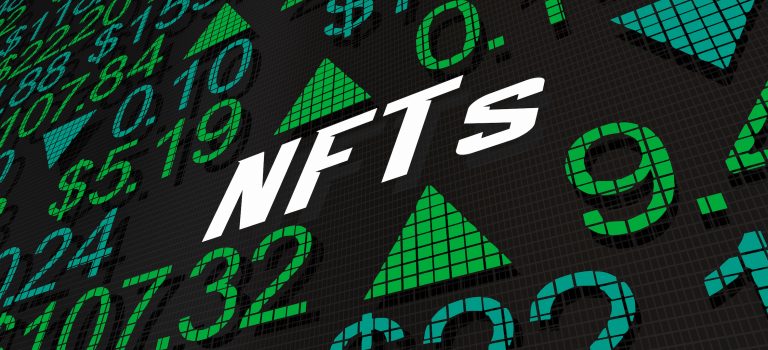Source: London Trade Art.
What is the secondary market and how can you assess how much an NFT will increase in value over time?
In the last two LTArt Magazine articles, we discussed the origins of NFTs and how they’ve revolutionised the art market, and who the top-record-breaking NFT artists of 2021 were. These two topics bring us to the secondary market, answering key questions we’ve had on how NFT art can gain value over time.
To break it down, once a collector purchases an NFT in the Primary Market, either directly through the artist’s site or a third-party platform, they are usually able to trade them with other collectors in secondary marketplaces. To put it simply, while the ‘primary market’ refers to the first sale of an artwork, the ‘secondary market’ refers to all subsequent resales of the work.
NFTs mark a turning point in the art market, in that they represent the first time a digital asset can be awarded property rights, with ownership officially handed down from the seller to the buyer, which is essential for market trading. Because of this, an artist’s right to secondary sale royalties is automatically guaranteed, without the requirement for extra legal work. This is a huge benefit for artists, especially digital artists, who are able to not only have recognised ownership of their work but also instantly receive their due cut of all future sales of it, for the first time.
As for collectors, the value of the secondary market is that it guarantees not only authenticity but also traceability. As NFT sales expert Path, aka Cryptopathic, states, ‘compared to traditional collecting, NFT secondary markets provide a frictionless experience with guaranteed authenticity’ (quoted in ‘The next big thing: secondary markets, Foundation).
That said, how do you estimate the value of NFT art and how it will fare on the secondary market? In essence, when assessing the potential value of an NFT, it’s important to take into account:
Rarity
Was the piece created by a famous name; is it highly desirable and does it have a limited supply? Typically, works by prominent figures or companies sell out in minutes and their value on the secondary market increases consistently. For example, when Twitter minted its first NFTs, in the form of 20 pieces of their Fury Twitter logo, in June 2021, it saw bids in the tens of thousands within the first day. One of the NFT videos was purchased for $56,900; however, a resale of one of the videos amounted to $124,927 less than two months later, amounting to a 121% gain. These types of NFT projects are much more comprehensive and may be easier to predict.
Utility
Does the NFT project have value outside of simply being a work of art? The main question people ask themselves when purchasing NFTs is how they can be worth money, if they simply represent ‘ownership’ of an online asset, which in principle, could be screen-grabbed for ‘free’. The way around this could actually be to create a Utility NFT, which attributes additional value than simply ownership of the artwork. For instance, it can be in the form of receiving a physical version of the digital piece of art that matches the NFT or special access to an event or a membership associated with that NFT.
Uniqueness
Is the artwork unique or does it follow a similar formula to others? It is important to remember to always check who the artist is, whether the artwork is hand-drawn or generative, whether a utility is involved and whether the project owner is verified on the market of sale. You want to avoid works that are just spin-offs of already successful ones.
According to Richard Chen, creator of the data-tracking site Crypto Art and Partner of 1Confirmation, a firm that invests in cryptoart, as referenced in the The Cryptonomist’s article ‘The secondary NFT market is growing rapidly’, ‘smart collectors’ are realising the long-term value of NFTs that are brought to market by artists who have a full understanding of their function. His site demonstrates that the secondary market is growing at a much faster rate than the primary one, mainly due to the most popular NFT artists, many of whom we mentioned in our previous article.
To conclude, although the secondary market for NFTs is still in its infancy, it has the potential for a very bright future, thanks to innovative creators and artists who are revolutionising the way that we not only purchase but also sell art within a more transparent market. As highlighted in the Harvard Business Review, the real strength of NFTs and NFT art is that they enable the creation of a community, allowing ‘people to create and build upon new forms of ownership’.








